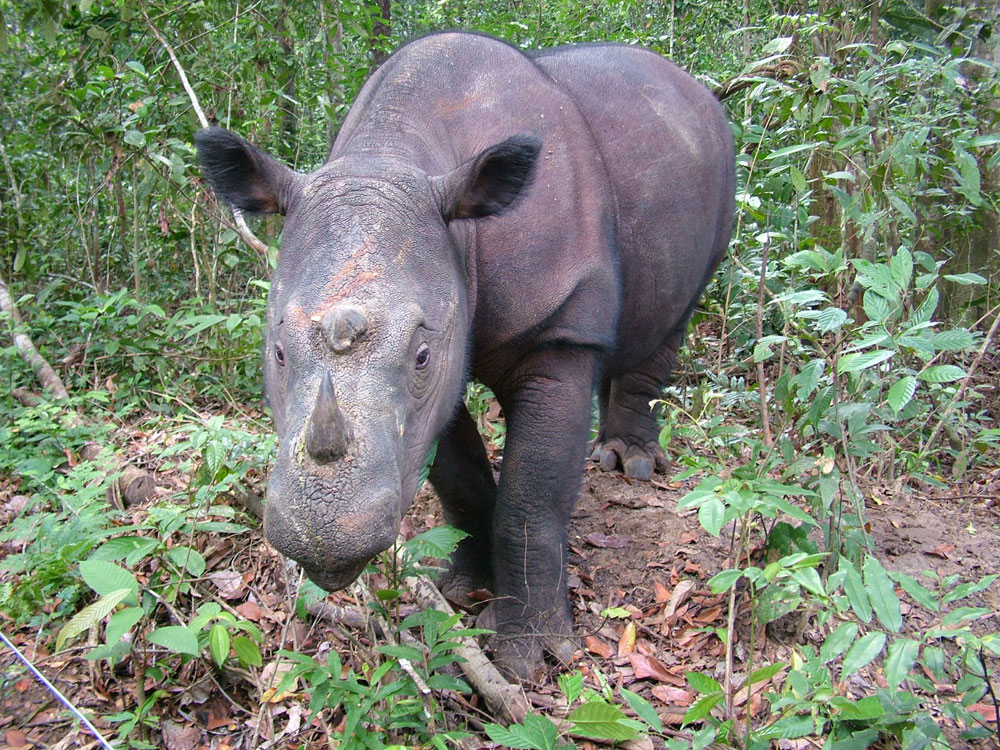6th Mass Extinction? Humans Kill Species Faster Than They're Created

Humans are killing off species thousands of times faster than nature creates them, new research finds.
The modern rate of extinction across species is 1,000 times that of the background rate before humans began altering the globe and thousands of times faster than the creation of new species, according to a new study in the journal Conservation Biology. The findings echo and expand on previous research published in the journal Science, which also suggested that humans are on the verge of causing a sixth mass extinction on Earth.
"We now know for certain how much faster species are going extinct," said Stuart Pimm, a conservation ecologist at Duke University and president of the nonprofit conservation group Saving Species.
To put it in concrete terms, Pimm told Live Science, without human activities, the planet should lose a bird species only about once every 1,000 years. In actuality, at least 150 species of birds have gone extinct in the last 500 years alone, according to conservation partnership BirdLife International. [6 Extinct Animals That Could Be Brought Back to Life]
Mass extinction?
The new work, which is part of the same research initiative that was the basis of the paper published in Science in May, is the final piece in a five-year project to understand how many species there are, how many are unknown and how fast they're going extinct, Pimm said.
"Getting the rates of extinction now is pretty straightforward," he said. "You basically look at the obituary notices."
Get the world’s most fascinating discoveries delivered straight to your inbox.
The past, however, is harder to illuminate. Fossils can trace the history of some diversifications and extinctions, but they preserve mostly marine animals rather than land animals, and do so in a spotty record. The total number of species is another clue, as it can reveal how quickly species diversify.
"You don't need very much information for that. The first bird was Archaeopteryx, and we now have 10,000 species of birds, so you can work out how fast new bird species are created," Pimm said. Archaeopteryx is considered a transition species between dinosaurs and birds.
But diversification data don't reveal the whole story. Species might be going extinct continuously but could still become more diverse if species formation happens more often than extinction.
Pimm, along with lead author Jurriaan de Vos of Brown University and their colleagues, turned to DNA data to fill in the gaps.
Using molecular phylogenies — family trees created by a comparison of DNA among species — the researchers tracked how species are born and die over time. This is the first time the three sources of information, from fossils to diversification to molecular phylogenies, have been tied together, Pimm said.
Diversification versus extinction
The results were sobering: Species are not "living fast and dying young," which is a blow to biodiversity, Pimm said. There is no bump in diversification to offset the rapid pace of extinction, he said.
"The idea is that near the present, just within the last 100,000 years, the last million years, there ought to be a blip in the number of species, because they haven't had a chance to go extinct yet," Pimm said. "The bottom line is, there is no blip."
The study also found that the background rate of extinction should be about one species per 10 million annually. Today, between 100 and 1,000 species per million vanish annually. Meanwhile, new species come into being at a rate of between 0.05 and 0.2 per million annually.
Policymakers often question whether the current high rates of extinction are worth worrying about, Pimm said, given that species wink out of existence all the time.
"It's like death and taxes," Pimm said. "They may be inevitable, but you don't want them to be too high."
The new and clarified understanding of the scope of the problem will feed into strategies to reduce extinctions, Pimm said. "We want to get on with the business of saving biodiversity," he said.
Follow Stephanie Pappas on Twitter and Google+. Follow us @livescience, Facebook & Google+. Original article on Live Science.

Stephanie Pappas is a contributing writer for Live Science, covering topics ranging from geoscience to archaeology to the human brain and behavior. She was previously a senior writer for Live Science but is now a freelancer based in Denver, Colorado, and regularly contributes to Scientific American and The Monitor, the monthly magazine of the American Psychological Association. Stephanie received a bachelor's degree in psychology from the University of South Carolina and a graduate certificate in science communication from the University of California, Santa Cruz.


